How To Get a Bank Certificate and Bank Statement for your Visa Applications
To prove that you have the means or capacity to travel, you’ll need to show a Bank Certificate or Bank Statement. These are some of the most common requirements for a visa application. Here’s a guide about how to get a Bank Certificates and Bank Statements for your Visa Applications.
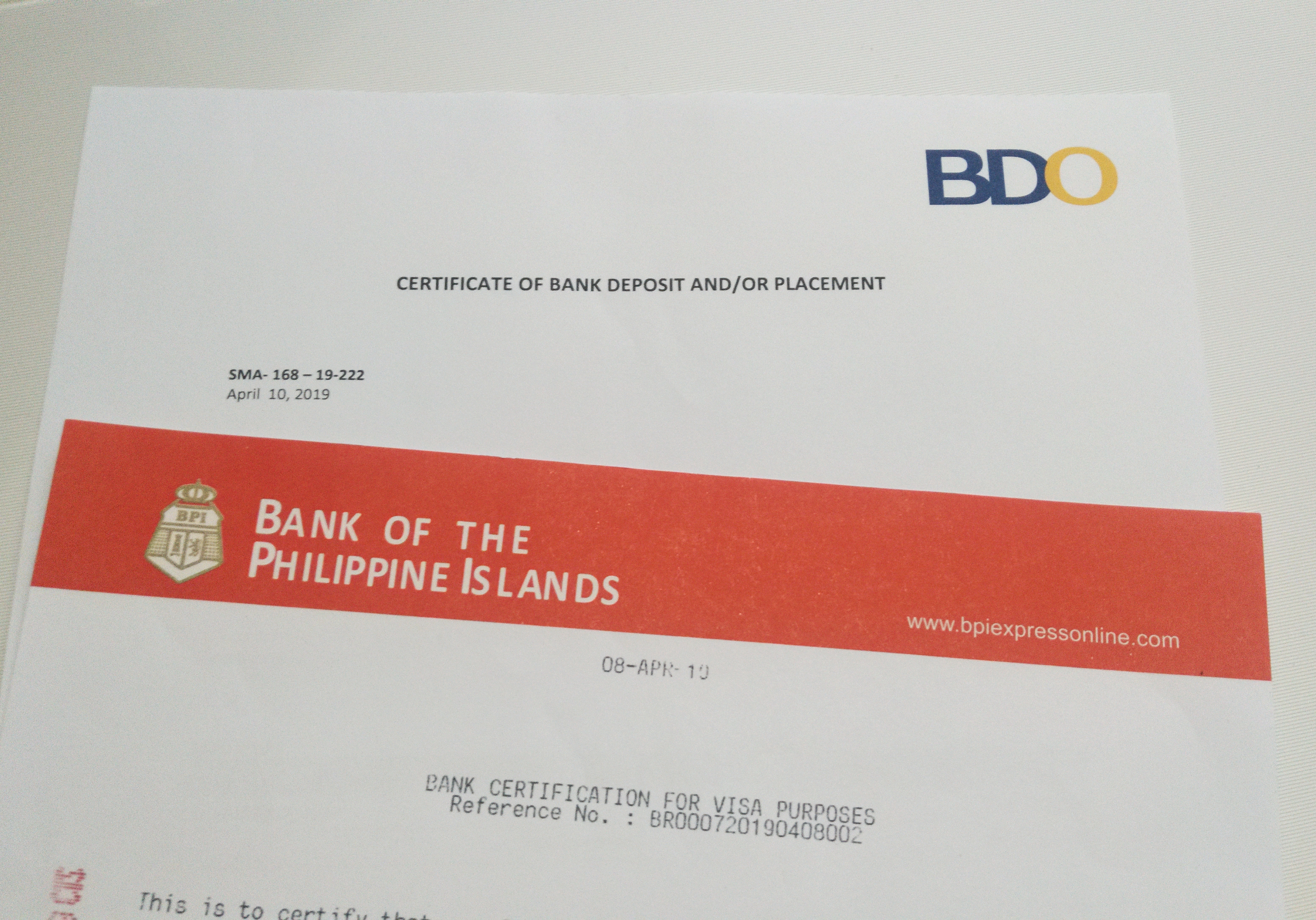
When I applied for a Japan Tourist Visa a few years ago, a Bank Certificate was only needed. For the South Korea Tourist Visa the next year, Bank Statement and Certificates were requirements. This an essential document for your application – it may get you approved or denied. To find out more about how to get one and some tips for your applications, you may read this guide.
- Banks in the Philippines: Complete List of Philippine Bank Codes and SWIFT Codes
- Tips on How to Have the Right “Show Money” for Your Visa Application
- Bank Transfer Tips: What to Know When You Transfer Money from One Bank to Another
- 9 Ways To Make Money While Traveling – How To Sustain a Travel Lifestyle
- 10 Cool Travel Hacks to Save You Money
Table of Contents
Bank Certificate vs Bank Statement (plus tips)
If you don’t know the difference between a Bank Certificate and a Bank Statement, here are some pointers:
Bank Certificate
- Confirmation from a manager or officer of the bank that you do have an account opened in their bank
- Account Number, Type, Bank Opening Date, Bank Balance, and Average Daily Balance may be shown in the Bank Certificate
- ADB and the opening date isn’t shown in the Bank Statement
- Having a bank account that has been opened for quite a while is an advantage rather than having opened a new one (Some consuls may think you just opened it for visa purposes and you may have borrowed money)
- ADB may show your activity for the whole year – it’s better if you have an ADB that’s more than half of your latest balance. A small ADB will mean that you have deposited a large amount of money before getting you Bank Certificate and this may make the visa officer curious
Bank Statement
- Shows transactions in your account for an identified period
- Debits (DR) on your account will usually be withdrawals, bill payments, service charge, or taxes
- Credits (CR) on your accounts are deposits, interests
- Often, there will be no signature needed by a bank manager or officer
- You can access a Bank Statement through online banking
- Having an active bank account even though you have small amount is a plus rather than having an inactive one
- It will depend on the country you are applying if how many months of Bank Statement you will need, usually its three but sometimes it can go to six or a year
Additional Tips:
- On your application, double-check if you will need a Bank Statement or Bank Certificate, giving the wrong requirement may lead to a refusal of your visa
- Not sure what to pass? Pass both. It’s better to be safe than sorry.
- Some Embassies will require a minimum amount that’s needed in your Visa Application, some will not, but it’s better to research ahead as you may be denied if you don’t have enough money (e.g., having only PHP 50,000 but you are planning a three month trip in the Schengen Area)
- If you are planning to apply for a visa, it’s better to deposit money little by little (doing it for a year) rather than saving it somewhere (e.g., a piggybank) then depositing it one time – it may seem suspicious
Getting a Bank Certificate
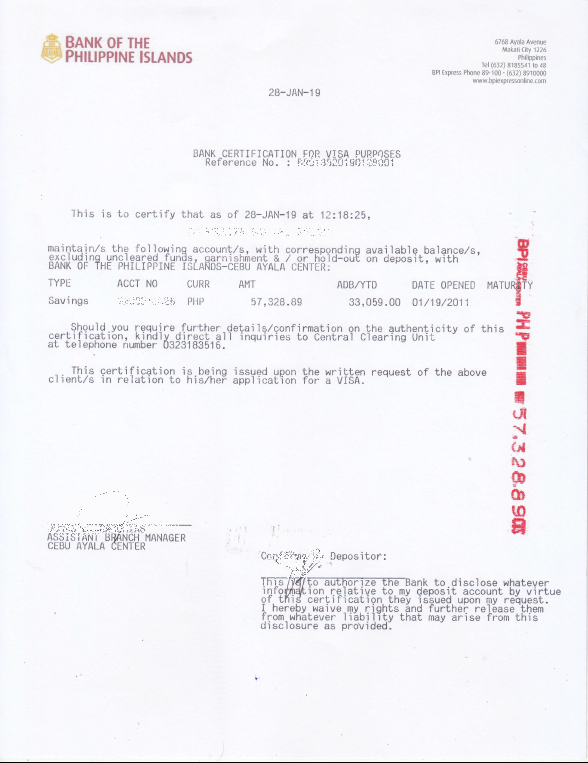
Documents or Information you may need:
- Valid ID
- Account Name and Account Number
- Fee (depends on the bank)
- Authorization Letter or SPA with IDs
- Folder or Envelope – so that it won’t get crumpled
Steps you may need to do:
STEP 1: Go to a branch of your bank near you. Many banks can access your account even though you opened it in another one. BPI, for example, I tried getting from 2 different branches. Some may need to go where they opened it.
STEP 2: Ask the guard where you can get a Bank Certificate. You may be given a form to fill up and a queue number.
STEP 3: Fill-up the Form. You may need to answer the following:
- The document you want (Bank Certificate)
- Account Name
- Account Number
- Purpose of the document: Visa (specify the country)
- What you want to be shown: Opening Date, Type, ADB (Average Daily Balance)
- How you will be charged for the certification fee – it’s either through Cash Payment or Charged to your account
STEP 4: Double-check the form and wait for your turn.
STEP 5: During your turn, give your form and ID to the bank officer.
STEP 6: Wait for your Bank Certificate to be printed. You can get it within a few minutes or the next day, depending on the signatory. As for my personal experience, I only waited less than an hour to get my Bank Certificate.
Getting a Bank Statement
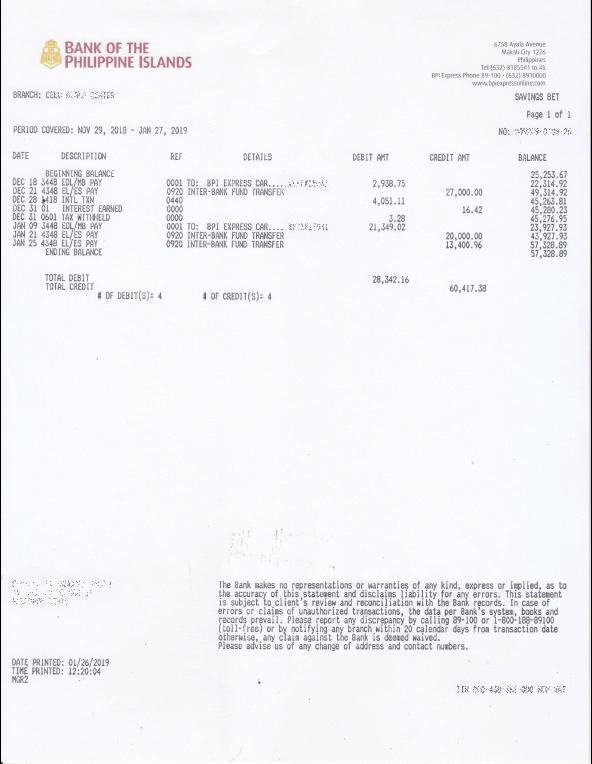
Documents or Information You may need:
- Valid ID
- Account Name and Account Number
- Fee (depends on the Bank)
- Authorization Letter or SPA with IDs
- Folder or Envelope – so that it won’t get crumpled
Steps you may need to do:
STEP 1: Go to a branch of your bank near you.
STEP 2: Ask the guard where you can get a Bank Statement. You may be given a form to fill up and a queue number.
STEP 3: Fill-up the Form. You may need to answer the following:
- The document you want (Bank Statement)
- Account Name
- Account Number
- Purpose of the document: Visa (specify the country)
- Transaction Dates – e.g., 3 months – January to March 2019
- How you will be charged for the certification fee – it’s either through Cash Payment or Charge to your account. Mostly, you will get charged per month.
STEP 4: Double-check the form (and the embassy requirement) and wait for your turn.
STEP 5: During your turn, give your form and ID to the bank officer.
STEP 6: Wait for your Bank Statements to be printed. You can get it within a few minutes.
Extra Tips on getting Bank Certificate and/or Bank Statement
- You can get both a bank statement and a bank certificate
- Fees may be different, sometimes the Bank Certificate is more expensive (PHP 200) but for Bank Statement you may be charged per month (PHP 100 x 3)
- Should you be out of the country, contact your bank so that you can know how to get an authenticated Bank Certificate or Statement.

Having the exact visa requirements is a step in getting your visa approved. I hope you know now the difference between a Bank Certificate and Bank Statement and getting it for your visa applications. I highly suggest having a bank account so that you don’t have to worry about this requirement. In case you don’t have one, we have tips on how to get a visa without a bank account. Good luck!

About the Writer

Hey, I’m Lyza! I once was a person who just imagined going to places “one day” but decided to pursue my dreams. My first travel abroad was in Japan, solo, last 2018, and fell in love with the journey since. I’m aiming to visit 10 countries before turning 30 and 2 new places in the Philippines every year. Besides traveling, I love organizing trips, photography, reading, and making new friends. Follow my adventures through my Instagram.

Are you on Pinterest? Pin these!

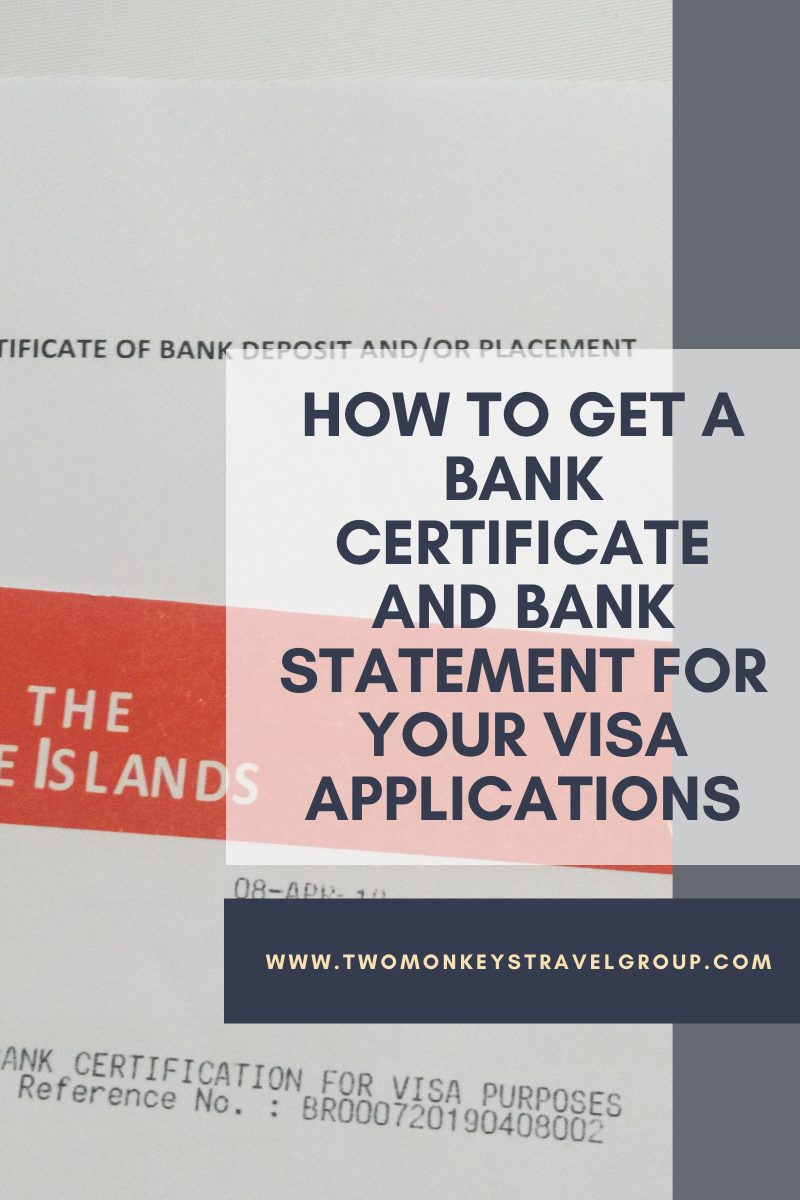
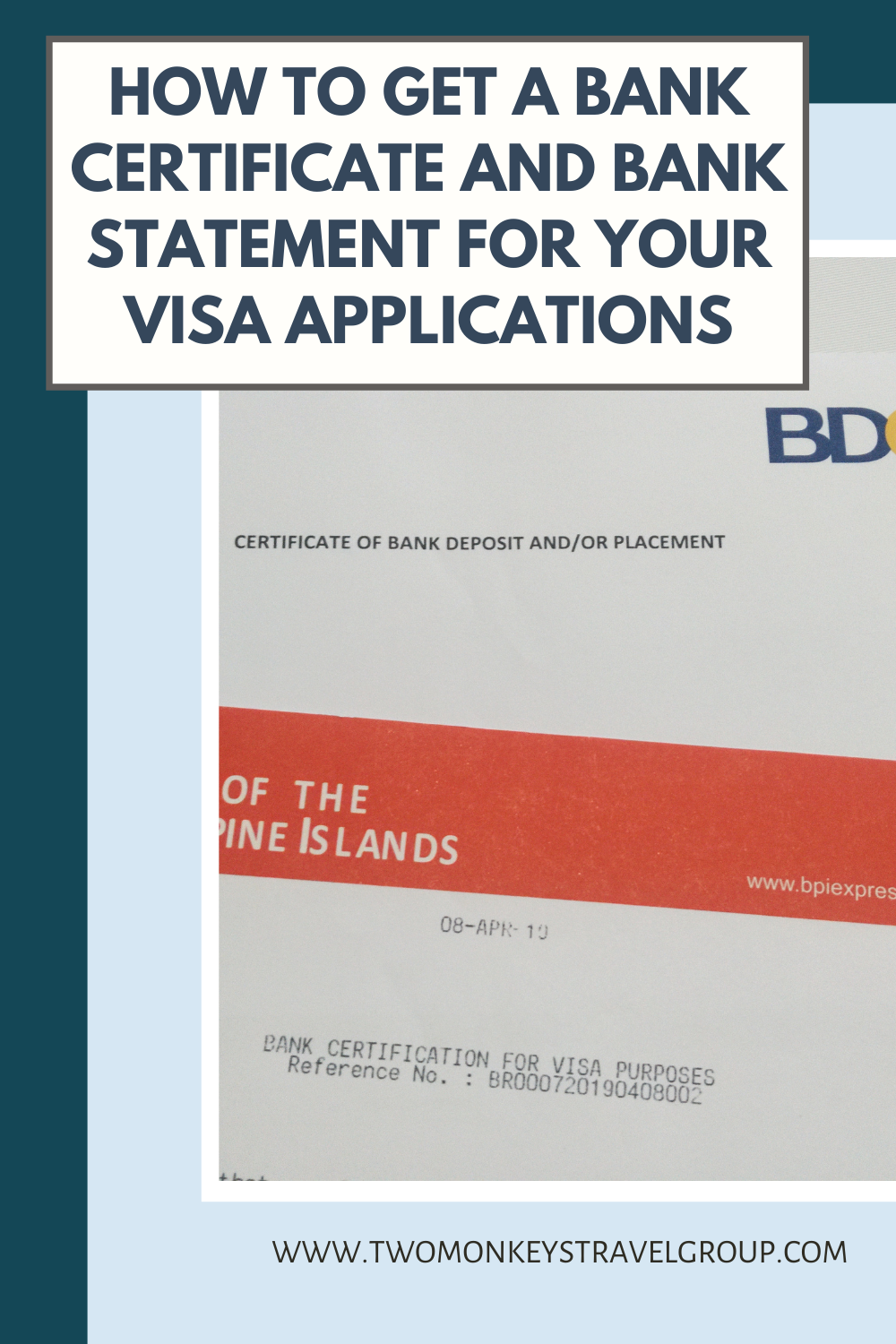
Thank you very much for this article, Lyza, very useful. I learned a lot from it, as I need to request a bank certificate in the UK. Many thanks.
Tips on how to get a bank statement & certificate with out a bank account….